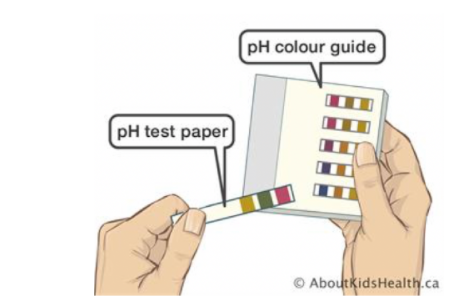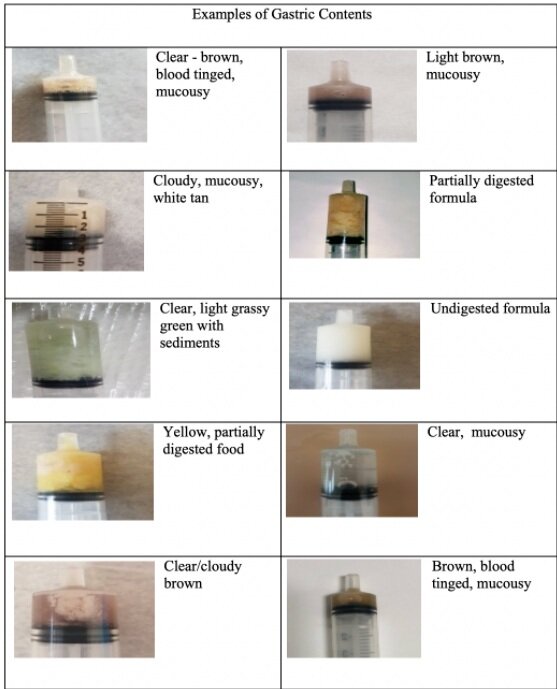HINT: What to consider when the pH of gastric aspirates from a nasogastric (NG) tube is >6?
Connected Care Quick Hits are up to date and evidence based recommendations for the care of children with medical complexity & technology dependence, from hospital to home.
HINT: What to consider when the pH of gastric aspirates from a nasogastric (NG) tube is >6?
SITUATION:
This QuickHit was developed based on a Connected Care Live consult from a Home & Community Care Service Provider asking if the NG tube was safe to use when the child's gastric pH was measured to be >6.
BACKGROUND:
NG tubes are increasingly used in supporting transitions to home for children with medical complexity. NG tubes are used to provide nutrition for children who are unable to feed by mouth and/or for ease of administering medications. Their use come with considerations for patient safety that include tube migration and risk of aspiration.
Measuring the pH of gastric aspirate is considered the 'gold standard' in routine confirmation of NG tube placement prior to use. Typically, a pH of <6 would indicate an NG tube is in the stomach. See this previous Connected Care QuickHit for best practice for confirming placement of NG tubes.
Unnecessary interventions including the placement of new tubes or imaging for placement may sometimes be avoided when pH > 6 and decision making is informed by knowledge of the child's baseline (usual) pH levels, partnership with family caregivers, collaboration with other providers, use of clinical practice tools and principles of Caring Safely.
ASSESSMENT:
Assessment of NG tube placement checks by gastric pH are to be completed:
When a new tube is inserted, and before each use (feeds or medications)
If the child is choking, vomiting, coughing or having trouble breathing
With any suspicion or concern the tube may have moved
If the pH of the gastric aspirate is >6, the NG tube may not be in the stomach, but rather the duodenum or lung.
But, also consider that the following may result in a gastric pH > 6:
Acid Suppressing Medications (e.g., proton pump inhibitors such as omeprazole)
Recent feeding (continuous feeds or recent oral intake)
How to assess the appearance of gastric aspirate?
NG tube aspirate can be examined for appearance that is consistent with a range of normal gastric contents (see table), supporting decision making that the NG tube is in the stomach.
RECOMMENDATION:
Connected Care recommends using the Caring Safely STAR tool to assist in troubleshooting and deciding whether to continue use of an NG tube.
STOP: Is the gastric pH reading >6? Do not use the tube until placement is confirmed.
THINK: Is the child receiving PPI medications that could increase gastric pH? Are they on a continuous feed? Can the feed be safely paused for 20-30 min to then recheck pH? Would visual assessment of gastric pH be a reliable and safe method for confirming NG tube placement for this child?
ACT: Recheck the pH again. If appropriate, compare the gastric aspirate obtained with the photos above. If there is any abnormal gastric aspirate or if you have concerns (ie. signs of bleeding- coffee ground, black or frank blood, large amount of bile), do not use tube and collaborate on a plan with family/point of care team.
REVIEW: Upon confirmation of NG tube placement continue to monitor the child for signs of distress during medication administration or feeds. Never use an NG tube if there is any doubt on correct placement. Consider a Connected Care Live consult if you are unsure and want support to do a double-check.















